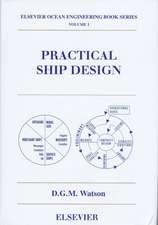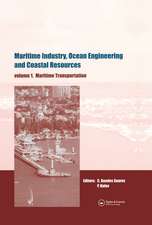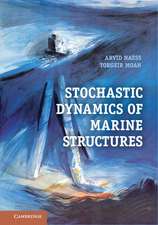Introduction to Naval Architecture: Formerly Muckle's Naval Architecture for Marine Engineers
Autor E. C. Tupperen Limba Engleză Paperback – 5 oct 2004
*Covers introductory level courses in Naval Architecture and Marine Engineering
*Updated to cover key developments including double-hulled tankers
*Fully revised fourth edition accompanied by exercises and worked solutions for the first time
Preț: 369.14 lei
Nou
Puncte Express: 554
Preț estimativ în valută:
70.64€ • 73.48$ • 58.32£
70.64€ • 73.48$ • 58.32£
Carte tipărită la comandă
Livrare economică 08-22 aprilie
Preluare comenzi: 021 569.72.76
Specificații
ISBN-13: 9780750665544
ISBN-10: 0750665548
Pagini: 464
Dimensiuni: 156 x 234 mm
Greutate: 0.69 kg
Ediția:4
Editura: Elsevier Science
ISBN-10: 0750665548
Pagini: 464
Dimensiuni: 156 x 234 mm
Greutate: 0.69 kg
Ediția:4
Editura: Elsevier Science
Public țintă
Students of naval architecture and marine engineering at NVQ, HND and degree level in the UK and international equivalents. Practicing and student crew working towards certificated command and engineering positions in merchant and naval sectors, in particular the UK DoT/SCOTVEC Certificate of Competency for Class 2 and Class 1 Marine Engineer Officers. Ship surveyors and related technical/engineering groups.Cuprins
Introduction; Ship design; Definition and regulation; Ship form calculations; Flotation and initial stability; External environment; Stability at large angles; Launching, docking and grounding; Resistance; Propulsion; Simple ship dynamics and vibration; Seakeeping; Manoeuvering; Main hull strength; Structural integrity; Internal environment; Ship types; Appendices; Web bank: Questions and Solutions
Recenzii
'This fourth edition of an Introduction to Naval Architecture by E.C. Tupper follows on from the previous well-established edition of a text book of naval architecture that many find an invaluable reference in either studying or practising many aspects of marine technology, whether as naval architects, marine engineers, or as sea-going ship engineers and commanders... it builds on the strengths of the previous edition as a very valuable introduction to naval architecture that is clearly written and with well-presented figures... A further welcome addition is the inclusion of a number of exercises and worked examples to allow practice of calculations... In summary, this fourth edition builds on the strengths of the previous edition, with significant beneficial revisions to provide an excellent and comprehensive text on naval architecture that will be an invaluable source of reference for all students and practising professionals in marine technology.' Dr Peter N H Wright, University of Newcastle in The Naval Architect, March 2005



















